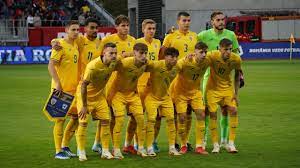Romania U21 has been a significant part of the country’s football landscape, serving as a critical stepping stone for young talent aspiring to reach the senior national team. The Romania U21 team symbolizes hope, development, and the future of Romanian football, showcasing emerging stars and fostering competitive spirit among the youth. This article delves into the various facets of Romania U21, exploring its history, key players, tactical evolution, and impact on Romanian football Five88.
History and Development of Romania U21
Understanding the roots and growth of Romania U21 requires a journey through its historical milestones, developmental programs, and contributions to national football culture Thể thao Five88.
Early Beginnings and Establishment
Romania’s focus on youth development dates back several decades, with the formal establishment of the U21 team in the late 20th century aimed at preparing young players for top-tier competition. Initially, the team functioned primarily as a feeder system for the senior squad, participating in regional tournaments and qualifying campaigns.
During the early years, Romania U21 faced challenges such as limited resources, inconsistent coaching, and a lack of structured youth development leagues. Despite these hurdles, talented players like Gheorghe Hagi and Dan Petrescu emerged from the system, laying a foundation for future success. The team’s early efforts contributed to Romania’s reputation as a country capable of producing technically skilled footballers.
In the 2000s, increased investment in youth academies and better scouting systems significantly improved the quality and competitiveness of Romania U21. The UEFA European Under-21 Championship became a focal point, offering young Romanian players exposure to high-level international competition. Notably, the team qualified for multiple tournaments, gaining valuable experience and recognition.
Evolution of Youth Development Programs
The evolution of Romania U21 is closely tied to the broader development of youth football infrastructure in Romania. Over the years, the government, football federation, and private clubs collaborated to establish academies, training centers, and talent identification programs. These initiatives aimed to streamline player development pathways and ensure that promising talents receive professional guidance from an early age.
The implementation of UEFA and FIFA standards in youth coaching contributed to more sophisticated tactical understanding and physical conditioning among young players. Additionally, partnerships with European clubs facilitated player exchanges, loans, and training opportunities abroad, broadening the horizons for Romania U21 prospects.
Furthermore, the advent of modern scouting technologies and data analytics enabled coaches to assess player potential more accurately. As a result, Romania U21 began to field more tactically versatile and physically prepared athletes, enhancing their competitiveness on the European stage.
Impact of International Competitions
Participation in international competitions has played a pivotal role in shaping Romania U21. Qualifying campaigns for the UEFA European Under-21 Championship provided platforms to measure progress against Europe’s best youth teams. The team’s performances in qualifiers often reflected broader trends in Romanian youth football—periods of success followed by rebuilding phases.
One of the most notable moments was Romania’s qualification for the semi-finals of the 1998 European U21 Championship, which showcased their talent on a continental level. More recently, the team’s attempts to qualify for tournaments have generated media attention and motivated young players to elevate their game.
